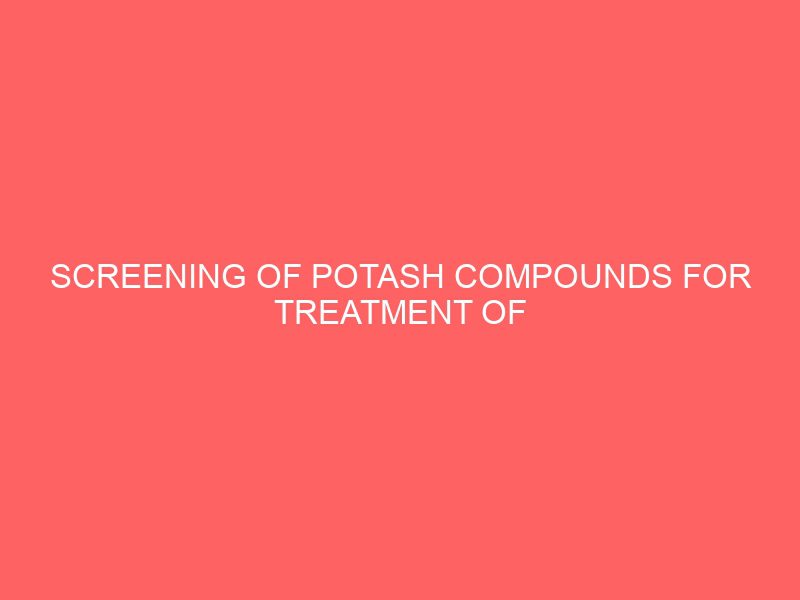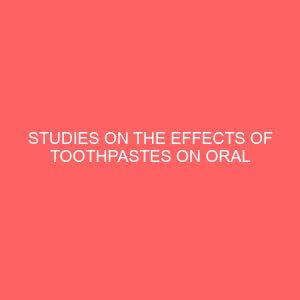Description
ABSTRACT
The antimicrobial effects of different potash compounds on Candida isolates were evaluated by in vitro and in vivo methods The potash compounds screened were potash alum, potassium carbonate and palm ash from Elaeis guineensis Fifty high vaginal swab samples were collected from patients suspected of having vulvovaginal candidiasis thirty-five out of the fifty samples were positive to Candida growth The Candida isolated include Candida albicans 50, Ctropicalis 34 and C glabrata 16 The in vitro antimicrobial effects of the potash compounds and their various combinations were evaluated using the wellinagar and Kirby Bauers methods The wellinagar method gave a better result than the KirbyBauers method Potash alum gave the highest inhibition zone diameter 48mm at 80 w/v concentration while potassium carbonate 36mm at 80 w/v concentration was the least The in vivo antimicrobial assay was done using four week old healthy albino mice weighing between 100grams and 120grams The animals were divided into four groups comprising: the normal mice, immunosuppressed mice, the positive control and the negative control groups The animals were immunosuppressed intraperitoneally using 01mililitre cyclophosphamide 100mg/kg body weight without anesthesia They were inoculated cutaneously five days after immunosuppression with a loopful of the isolates equivalent to 1x108cfu/g and carefully observed for clinical signs and symptoms of cutaneous candidiasis The immunosuppressed group developed infection 7 days after the inoculation while the normal group developed infection 9 days after the inoculation The immunosuppressed and the normal groups were treated immediately after the manifestation of clinical signs and symptoms of cutaneous candidiasis This was done using different formulations of the potash compounds The positive control group was treated with topical nystatin and Vaseline gelly while the negative control group was left untreated The animals showed a gradual disappearance of the clinical signs and symptoms from the fourth day of treatment onwards The in vivo studies confirmed the results of the in vitro sensitivity test, thus showing that potash compounds could serve as better alternatives to our conventional antibiotics
TABLE OF CONTENTS
Title pagei
Certificationii
Dedicationiii
Acknowledgementiv
Table of contentsv
List of Tablesvi
List of Figuresvii
Abstractviii
10 INTRODUCTION1
20 LITERATURE REVIEW9
21 Pathophysiology of Candida11
22 Epidemiology of Candidiasis14
23 Treatment of Candidiasis16
24 Chemistry of Potash Compounds22
30 MATERIALS AND METHODS28
40 RESULTS40
50 DISCUSSION75
60 CONCLUSION/RECOMMENDATION79
70 REFERENCES80
80 APPENDICES89
LIST OF TABLES
Table Title Page
1 Results of microscopic morphologies and germ tube test
2 Sugar fermentation test
3 Isolation frequency of the isolates from the HVS samples
4 Antimicrobial effects of the potash compounds on Candida albicans
5 Antimicrobial effects of the potash compounds on Candida tropicalis
6 Antimicrobial effects of the potash compounds on Candida glabrata
7 Antimicrobial effect of various combinations of potash compounds on Candida albicans using the wellinagar method
8 Antimicrobial effect of various combinations of potash compounds on Candida tropicalis using the wellinagar method
9 Antimicrobial effect of various combinations of potash compounds on Candida glabrata using the wellinagar method








Reviews
There are no reviews yet.